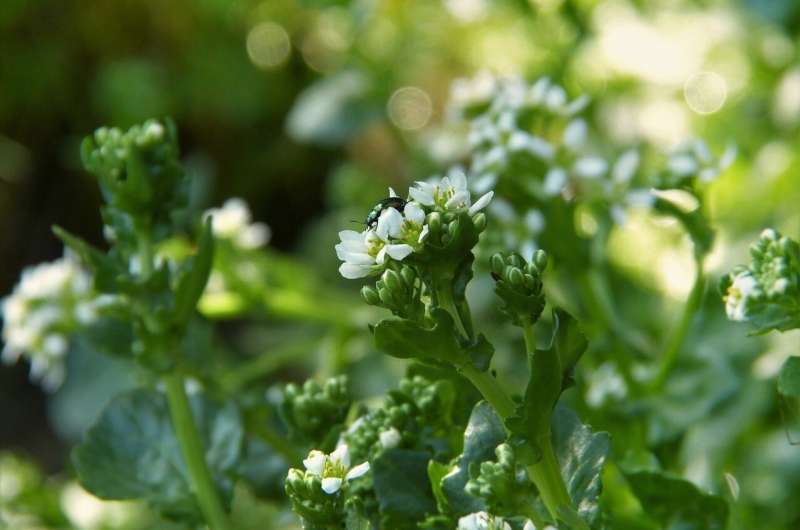This article has been reviewed according to Science X's editorial process and policies. Editors have highlighted the following attributes while ensuring the content's credibility:
fact-checked
peer-reviewed publication
trusted source
proofread
Implementing a new pathway to measure and value biodiversity

In October, world leaders will gather at the United Nations Biodiversity Conference in Cali, Colombia, to put an ambitious plan to halt human-induced species extinction into action. The conference, COP16, will focus on the historic Kunming-Montreal Global Biodiversity Framework, which sets 23 targets and four overarching goals to halt human-induced species extinction.
Pollution, climate change, habitat loss, and exploitation of nature have pushed a million plant and animal species to the brink of extinction and humans have altered 75% of land and 66% of marine environments.
As global leaders look for a way to unify efforts to reach the biodiversity goals adopted by 196 parties—with the idea of setting a defined target, similar to the 2015 Paris Agreement to limit temperature increases to 1.5 degrees Celsius from pre-industrial levels—a new paper by Yale scientists is proposing a different approach, one that the authors argue is better tailored to the nature of the problem.
The paper, published in PNAS and co-authored by Eli Fenichel, Knobloch Family Professor of Natural Resource Economics, Oswald Schmitz, Oastler Professor of Population and Community Ecology, and Monica Dean, of the University of Southern California, calls for a hierarchical system of measuring the economic value of biodiversity that begins with assessing the value of individual species and then aggregating these values to reflect the overall biodiversity of ecosystems.
They suggest that diplomacy should focus on a process for starting with a few country-specific species in each nation and a plan to build on that framework. They note that this approach follows the path of measuring economies, something that was also very hard when the international community started that process.
Economic importance
Over half the global GDP is dependent on nature, according to the World Economic Forum. In the U.S., nature-dependent sectors amount to $2.1 trillion of the GDP. Yet existing biodiversity indexes, and indexes of biodiversity in general, are unable to connect biodiversity and the economy because they are unable to provide unique measures of changes in biodiversity, the authors contend.
"In adopting the Kunming-Montreal Global Biodiversity Framework, global policymakers have determined that valuing the contribution of biodiversity to humans is necessary for halting and reversing the loss of global biodiversity. However, by leaving open the methodology for how best to perform that valuation, a discordant set of valuation measures and approaches are being undertaken globally—leading to incongruous outcomes and a likelihood that the goals of the GBF will not be achieved," they wrote.
They argue that it is not possible to develop a single measure of biodiversity that, when it changes, leads to a well-defined change in value.
Instead, biodiversity could be defined over a classification system that connects biodiversity to its value for people. The process would begin by measuring the value changes in individual species. For example, a particular plant species might be valued for its role in preventing soil erosion, while an animal species might be important for its role in pollination or tourism.
"You can't summarize biodiversity into one metric," Fenichel said. "It is not a productive conversation. It's fundamentally a local issue and takes local action. We need to understand how different elements of biodiversity matter for people differently in different places."
Changes in biodiversity can be viewed as a subset of the change in natural capital wealth, the authors suggest. This approach requires thinking of biodiversity as a "shorthand for the assemblage of life in a specified area that includes an accounting for specific ecological relationships, and not as a physical measure itself."
Countries could choose a first set of species, perhaps a keystone species, that are viewed as ecologically, socially, and economically important and conditioning valuation on local ecological interactions and interactions with people.
"I think biodiversity means a lot of different things to different people, but however we measure biodiversity, it has to talk through economic data because we cannot deal with loss of nature and biodiversity as if it's unconnected to economic decisions and people's livelihoods," Fenichel said.
Guiding investment in conservation
Policymakers can use the clearly defined economic valuation of biodiversity to guide investments in conservation, ensuring that biodiversity considerations are integrated into economic planning and development and helping to close the more than $700 billion per year biodiversity finance gap.
"Our approach recognizes that species cannot be valued as mere static entities unto themselves. We argue for taking a more holistic valuation approach that accounts for how changes in species are tied to their contributions to ecological functioning that sustains ecosystems and human well-being," Schmitz said.
The authors note that while the initial system they propose may be imperfect, the statistical measures can evolve over time, as other measures have in national economic accounting.
"We just need a process to start. We know this won't give us great international comparability in the short term, but changes in biodiversity are probably not really comparable internationally, and once we have a process, we can learn from it and improve. It will help us make better decisions," Fenichel said.
More information: Eli P. Fenichel et al, The path to scientifically sound biodiversity valuation in the context of the Global Biodiversity Framework, Proceedings of the National Academy of Sciences (2024). DOI: 10.1073/pnas.2319077121
Journal information: Proceedings of the National Academy of Sciences
Provided by Yale University


















